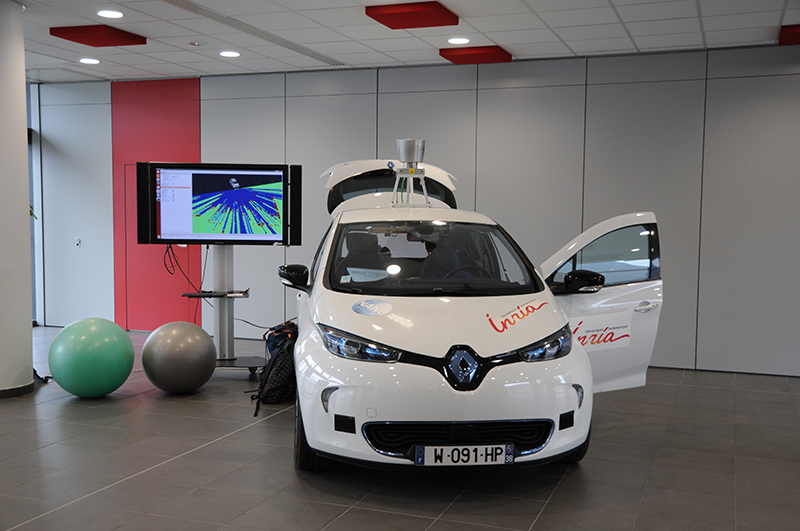The “Workshop on Technologies for Autonomous Vehicles” was held on Tuesday, February 21, 2017 at the CCL building on the MINATEC campus. The workshop, organized by Inria, the CEA, and IRT Nanoelec, attracted a variety of driverless-car stakeholders spanning both academia and industry and addressed a range of issues related to vehicle automation.

A panel of guest speakers gave presentations on a broad range of topics, from innovative sensors and location and perception methods to hardware and software architectures for automotive applications. The floor was then opened to questions, with ample time for the panel and audience to exchange viewpoints on how the automotive industry will change, the future of the technologies presented, keeping people safe, and keeping the systems themselves and their communications secure from cyberattacks.
A poster session and two live demos highlighted research conducted under the IRT Nanoelec PULSE program (the PERFECT joint research project between Inria and the CEA). The results of the perception, fusion, sensor data time and space filtering, and collision-prediction algorithms tested on an instrumented Renault Zoé car were presented, as were the results of implementing occupancy grid construction, using data fused from several sensors, on low-power processors.
The afternoon was dedicated to a Ph.D. dissertation defense by Tiana Rakotovao, who presented research conducted under the Inria-CEA joint project. Her dissertation, Integer Occupancy Grids: a Probabilistic Multi-sensor Fusion Framework for Embedded Perception, was lauded by the examination committee, and the research will pave the way for future development work and more joint research between the institutes.




